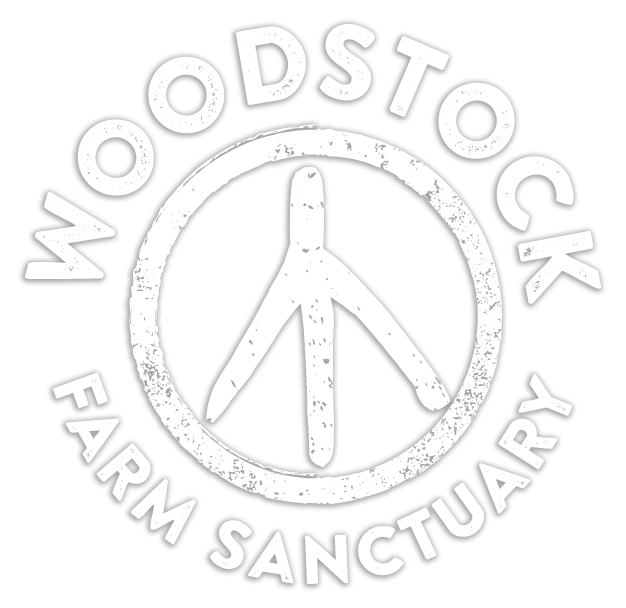The Birds Behind The Headlines
Yet again with the backyard chickens.
As a sanctuary for farmed animals, including hundreds of chickens, ducks, and turkeys rescued from farms, we have been fighting to keep our birds safe from bird flu since early last year. It’s taken a lot of time and money and worry at our small nonprofit rescue. Now bird flu is in the news because of the spread into wild mammals for the first time, a recent death of a little girl, and the high cost of eggs.
This coverage about the egg industry and avian flu fails to ask the central question: How did we get here?
The intensive breeding and confinement of farmed birds and the transports coming from those facilities to points of sale and slaughterhouses expedites the rapid spread and mutation of diseases, including this deadly virus, which is nearly 100% fatal in some domestic bird species.
If just one bird tests positive for bird flu at a production facility every bird onsite is killed. Because chickens are birds, they are excluded from humane slaughter protections under the law. This means that the 50 million birds culled on egg farms across the country over the last year, including those in New York, have been killed in truly horrific ways, including being smothered by foam or gassed. This is considered entirely a norm and legal.
Although stories of the mass culling of farmed birds due to avian flu are disturbing, business as usual in the chicken and egg industries are just as gruesome. Every year in the United States, eight billion chickens are slaughtered as babies at six weeks old for human consumption. Chickens on egg farms are sent to slaughter at around two years old-- their bodies worn out and broken down from laying hundreds of eggs in crowded and dirty conditions. The male chicks born into the egg industry are killed shortly after they hatch; since they can’t lay eggs and aren’t bred for rapid growth like “meat” chickens, they are considered waste products.
Layer hens have been bred to lay eggs at a rate far beyond what they would naturally—hundreds of eggs a year from birds who would naturally lay around 12 or 15 a year. This takes an enormous toll on their reproductive system, and many birds die painful deaths before they would be sent to slaughter. The environment in these farming facilities is dirty, crowded, and loaded with bacteria and viruses. This is status quo chicken farming.
While egg prices go up—a familiar story emerges… People are now purchasing baby chicks in order to have access to cheap eggs again. Unfortunately, we already know how this is going to play out, because we’ve been here before. At the beginning of the Covid pandemic in 2020, people impulse bought chickens and ducks that were predictably abandoned at the first sign of inconvenience. Sanctuaries and rescues are bore the brunt of this irresponsible purchasing, despite all our pleas to the public to think about what it really means to purchase baby birds.
And just like in 2020, we and other sanctuaries are bracing for the impact that this impulse-buying will have on the chickens themselves. We can see sick hens, unwanted roosters, and dumped birds in the near future while we are STILL dealing with the toll and threat of bird flu protection. Baby birds are being shipped to Tractor Supplies and AgWays and Garden Centers right now despite the risk of flu and people will take these babies home with no training, resources, or ability to provide proper care. Many will suffer and die and others will end up abandoned. Then the news media may report on that too like they did in 2020.
Outside of this obvious environmental and public health risk, we can’t forget the individuals lost in all these numbers and information about supply chains and bird flu. Chickens are quirky, intelligent, funny birds who form friendships, communicate with a variety of complex sounds, share parental instincts, and recognize human faces. That means that you can make friends with a chicken and they’ll absolutely know you and remember you—no different than a horse, goat, or dog would. And they can live long lives with their communities of family and friends—the same birds who are killed by two years old in farming can live upwards of six or seven years if properly cared for at a sanctuary or as a companion pet.
We know the birds in our care at Woodstock Sanctuary as individuals. Those who are concerned about the impact of the avian flu would do well by the birds, human public health, and their own ethics to stop supporting chicken and egg farming entirely.




